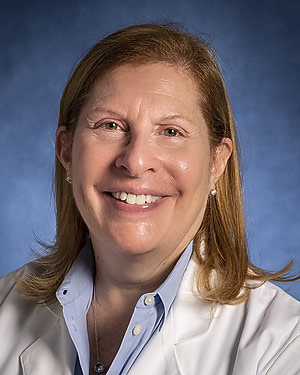Takeaway
We are sometimes unable to cure our patients. We can still make them feel heard and understood, and consider what it might be like to walk in their shoes.

Connecting with Patients | October 20, 2022 | 2 min read
By Joanne Shay, MD, Johns Hopkins Medicine
Comfort implies touch, a physical gesture. My favorite example is wrapping myself in a soft blanket while I sit on my favorite spot on the couch in my living room. Is it the sitting? Is it the couch? Is it the perfect place on the couch? Is it the blanket (I have two, one for warmer weather and one for colder days)? Is it the rest I’m allowing myself? I know the sensations I enjoy, but maybe there’s more. Maybe someone moved over on the couch so that I could have my spot. Maybe I remember that my favorite blanket had recently been tucked around one of my children who came for a visit and dozed off on the couch. Maybe I remember how my husband searched with me for the perfect couch when we moved into this apartment. I associate the physical touch and sensation with emotional well-being.
In my interactions with patients, there are things that I cannot fix. Sometimes a procedure that I perform requires more than one attempt despite my expertise and best effort. What I can do is regard every patient I care for as the most important person in my day for the time that I have with them. I can know the path that brought us together for the time we share and understand their story. I can listen to their fears and acknowledge their desires. I can think about how I would feel in a similar situation. How would I want to be treated? How would I want my family to be treated? I can give them an extra blanket or pillow.
Sometimes there’s not a desirable outcome. I cannot answer the question, I cannot fix the problem. I can be present. I can share the vulnerability of knowing that the chips are down. Sometimes there’s no option but to remain courageous in the face of pain and fear. I may not have the fix, but I can share the partnership of not knowing the future. I can give my assurance that the team managing the patient’s condition is the best equipped to find the path forward. I can follow through and seek better resources or new opinions. I can learn from my mistakes. Sometimes there’s nothing to smile about, but I can always offer comfort, even if I cannot offer a cure.
“To cure sometimes, to relieve often, to comfort always.”
-Dr. Edward Trudeau, founder of the famed tuberculosis sanitarium at Saranac Lake in New York’s Adirondacks.
This piece expresses the views solely of the author. It does not necessarily represent the views of any organization, including Johns Hopkins Medicine.

